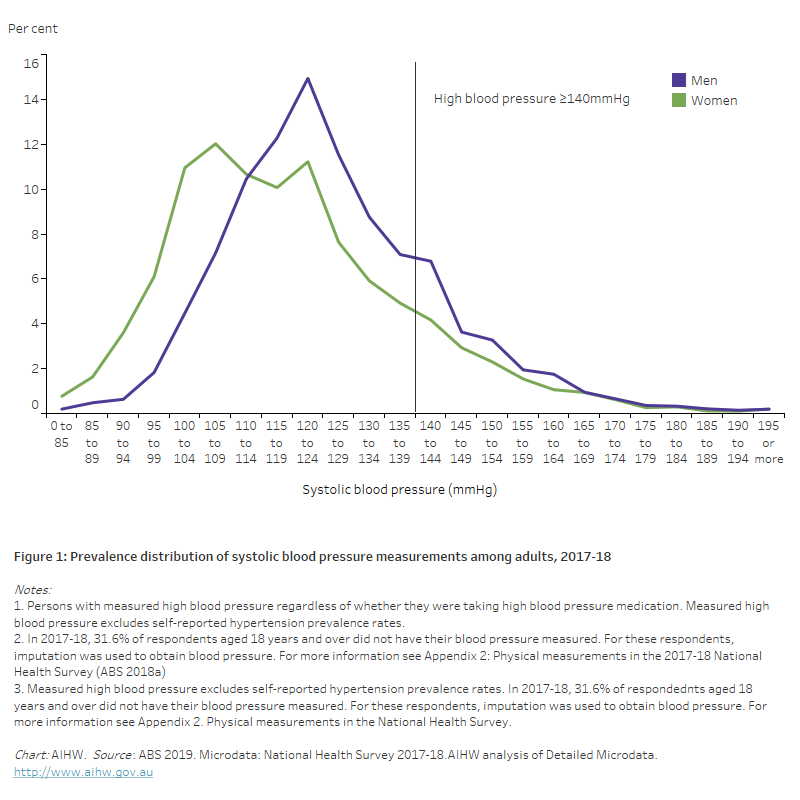High blood pressure
Blood pressure is the force exerted by blood on the walls of the arteries, depending on whether the heart muscle is contracting (systolic blood pressure), or relaxing between contractions (diastolic blood pressure). High blood pressure, also known as raised blood pressure or hypertension, is where blood pressure is permanently higher than normal.
The World Health Organization defines high blood pressure as any of the following:
- systolic blood pressure of 140 mmHg or more, or
- diastolic blood pressure of 90mmHg or more, or
- receiving medication for high blood pressure (Whitworth 2003).
Blood pressure is considered to be uncontrolled if measured levels of systolic or diastolic blood pressure are high, regardless of the use of blood pressure medication.
The risk of stroke, coronary heart disease, heart failure, peripheral arterial disease and many other forms of CVD is directly related to high levels of blood pressure.
Drug treatment and changes to health-related behaviours such as weight loss, a healthy diet and physical activity are effective in lowering blood pressure.
In 2017–18, based on measured data from the National Health Survey:
- an estimated 34% of adults had high blood pressure. This included 23% who had uncontrolled high blood pressure, and 11% whose blood pressure was controlled with medication (AIHW 2019)
- men were more likely to have uncontrolled high blood pressure than women (25% and 20%)
- the proportion of adults with uncontrolled high blood pressure increased with age ― from 7.5% among 18–34 year-olds (10.2% men, 4.9% women) to a peak of 47% at age 85 and over (51% men, 48% women).
The proportion of Australian adults with high blood pressure has remained stable since 2011–12.
Figure 1: Prevalence distribution of systolic and diastolic blood pressure measurements among adults, 2017–18
The two line charts show the distribution of systolic and diastolic blood pressure levels by sex in 2017–18.

Population groups
After adjusting for different population age structures:
- the prevalence of uncontrolled high blood pressure was similar between remoteness areas in 2017–18 –24% for Outer regional and remote areas, 22% for Inner regional areas, 22% for Major cities (AIHW 2019)
- uncontrolled high blood pressure was more common in the lowest socioeconomic areas (24%), compared with the highest socioeconomic areas (19%)
Indigenous adults were more likely to have high blood pressure in 2018–19 than non-Indigenous adults (37% and 29%) (AIHW & NIAA 2020).
References
AIHW 2019. High blood pressure. Cat. no. PHE 250. Canberra: AIHW.
AIHW & NIAA (National Indigenous Australians Agency) 2020. Aboriginal and Torres Strait Islander Health Performance Framework 2020 web report. Measure 1.07 High blood pressure. Canberra: AIHW.
Whitworth JA 2003. 2003 World Health Organization/International Society of Hypertension statement on management of hypertension. Journal of Hypertension 21:1983–92.


